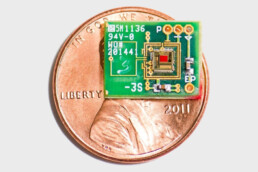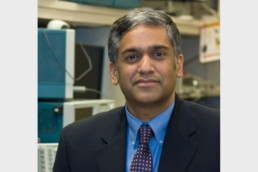Medical devices powered by the ear itself
For the first time, researchers power an implantable electronic device using an electrical potential — a natural battery — deep in the inner ear.
Deep in the inner ear of mammals is a natural battery — a chamber filled with ions that produces an electrical potential to drive neural signals. In today’s issue of the journal Nature Biotechnology, a team of researchers from MIT, the Massachusetts Eye and Ear Infirmary (MEEI) and the Harvard-MIT Division of Health Sciences and Technology (HST) demonstrate for the first time that this battery could power implantable electronic devices without impairing hearing.
The devices could monitor biological activity in the ears of people with hearing or balance impairments, or responses to therapies. Eventually, they might even deliver therapies themselves.
Chandrakasan selected for 2013 IEEE Pederson Award in Solid-State Circuits
Anantha P. Chandrakasan — the Joseph F. and Nancy P. Keithley Professor of Electrical Engineering at MIT and head of the Department of Electrical Engineering and Computer Science (EECS) — is the 2013 recipient of the IEEE Donald O. Pederson Award in Solid-State Circuits. He was cited in the award for "pioneering techniques in low-power digital and analog CMOS design."
The Solid-State Circuits Award, inaugurated in 1987, is the most prestigious IEEE award in the field of semiconductor circuits. The award was renamed in 2005 to honor Professor Donald O. Pederson, who was instrumental in establishing the IEEE Solid-State Circuits Society and the IEEE Journal of Solid-State Circuits (JSSC), considered the leading journal in the integrated circuit design field. The award is given for outstanding contributions to solid-state circuits, as exemplified by benefit to society, enhancement to technology and professional leadership.
New chip captures power from multiple sources
System developed at MIT could combine power harvested from light, heat and vibrations to run monitoring systems.
Researchers at MIT have taken a significant step toward battery-free monitoring systems — which could ultimately be used in biomedical devices, environmental sensors in remote locations and gauges in hard-to-reach spots, among other applications.
Previous work from the lab of MIT professor Anantha Chandrakasan has focused on the development of computer and wireless-communication chips that can operate at extremely low power levels, and on a variety of devices that can harness power from natural light, heat and vibrations in the environment. The latest development, carried out with doctoral student Saurav Bandyopadhyay, is a chip that could harness all three of these ambient power sources at once, optimizing power delivery.


